Recently updated on May 1st, 2025 at 03:56 pm
Every spring, vibrant clouds of colored powder paint the streets of India as millions celebrate what is known as Holi – the Festival of Colors. This joyous Hindu festival explodes with revelry, marking the triumph of good over evil, the arrival of spring, and new beginnings.
But Holi is much more than just throwing colorful powder. It’s a time for communities to come together and celebrate life. Let’s look at everything you need to know about Holi, from its ancient stories and traditions to the reasons behind the vibrant colors and how this fun festival has spread its vibrant magic around the world.
What is Holi and why is it celebrated?
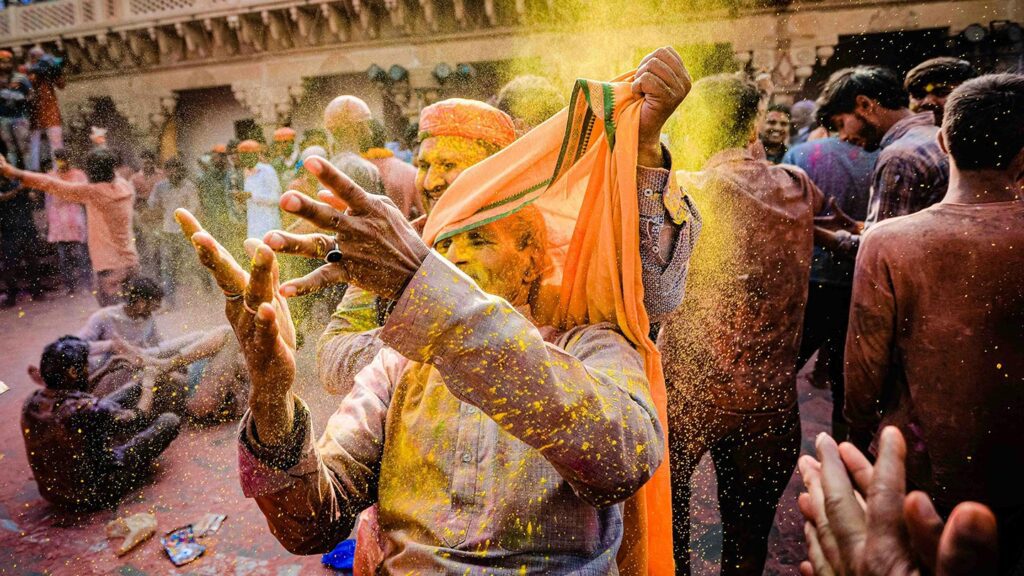

Holi, also known as the Festival of Colors, is a vibrant Hindu celebration that marks the end of winter and welcomes spring. Celebrated on the last full moon day of the Hindu lunar calendar, Holi is a time for joyous revelry, symbolizing new beginnings and the triumph of good over evil.
The festival draws inspiration from two key stories: the victory of the god Vishnu, in his Narasimha avatar, over the demon king Hiranyakashipu, and the playful love story of Krishna and Radha. Today, Holi celebrations are a chance for communities to strengthen bonds, let go of past grievances and embrace the hopeful spirit of spring with a riot of color.
TAKE A TRIP: Captivating Kerala
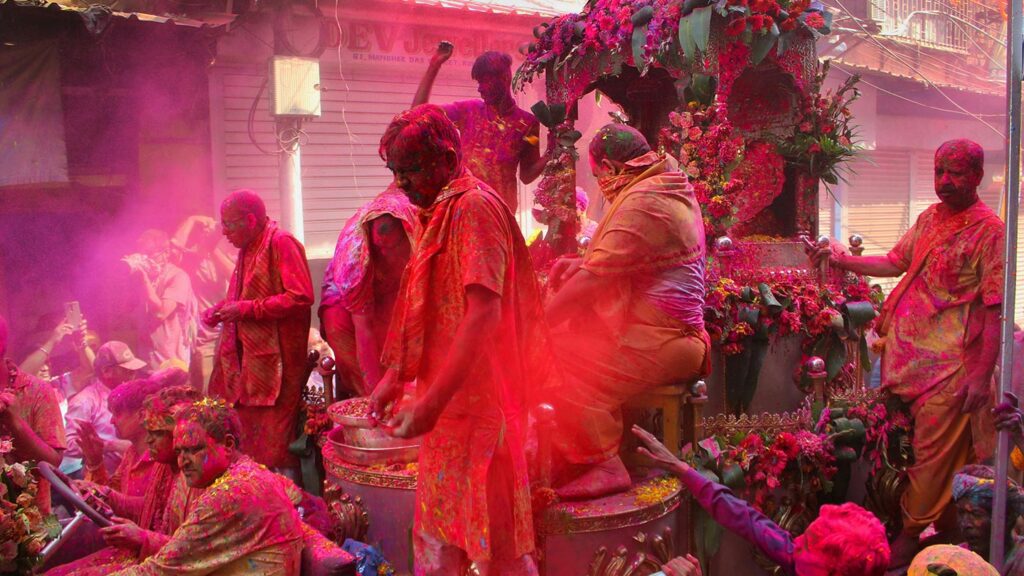

What are the stories behind Holi?
One of the main ideas behind Holi is the triumph of good over evil. Holi festivals intertwine two prominent Hindu narratives. The first recounts the legend of Hiranyakashipu, a demon king granted immunity from death by man or animal, day or night, inside or outside. Intoxicated by power, he demanded sole worship, even from his son Prahlada, a steadfast devotee of Vishnu, a Hindu deity.
Hiranyakashipu was upset at his son’s devotion to Vishnu and plotted his demise. However, Vishnu intervened, taking the form of Narasimha, a half-man, half-lion who killed Hiranyakashipu at mortal dusk. The bonfire lit on Holi eve (Holika Dahan) commemorates this victory of good over evil.
The second Holi story centers around Krishna, a playful Hindu god with blue skin, and Radha, his beloved. Krishna, self-conscious about his complexion, once expressed concern to his mother. She playfully suggested he color Radha’s face. This legend is said to be the origin of the playful throwing of colors during Holi, particularly prevalent in regions associated with Krishna.
PLAN A TRIP: Best of India
When is Holi celebrated?
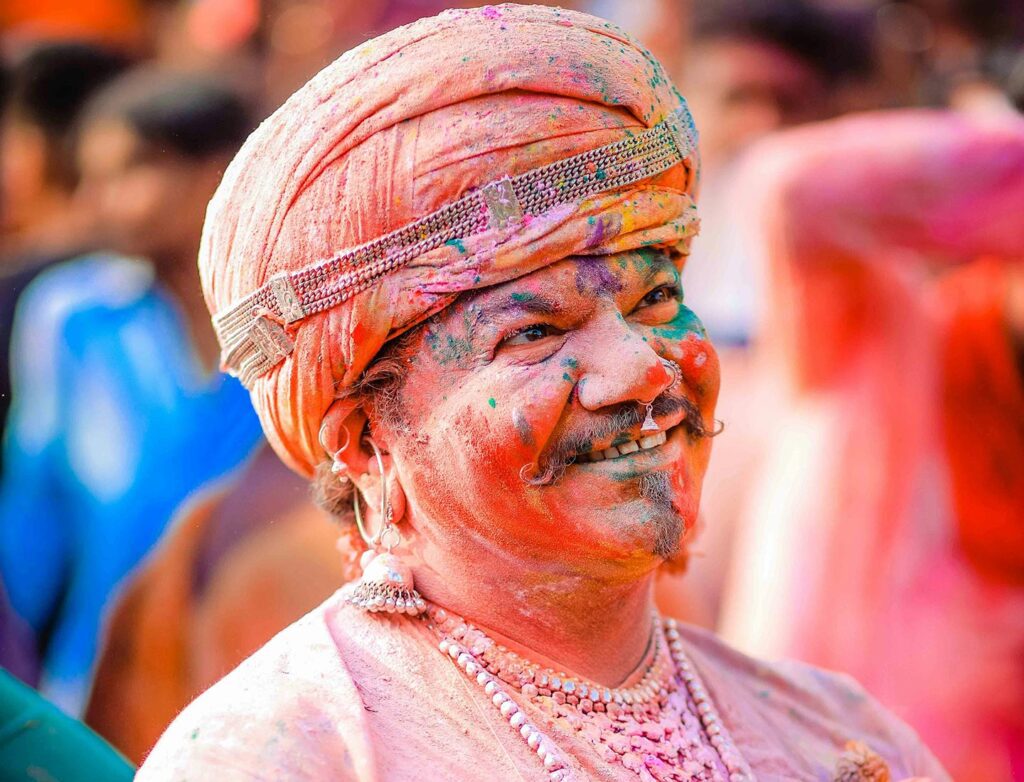

Holi’s vibrant festivities aren’t fixed on a single date. Instead, it follows the Hindu lunar calendar, landing on the last full moon (Purnima) of the month Phalguna. This usually translates to late February or early March, but the exact date changes year to year.
In 2024 the dates are March 24 and 25. The eve of the festival is called Holika Dahan, when puja and bonfires are held. Then the following day is Purnima or Rangwali Holi, when you can expect the vibrant color throwing, water guns, and dancing.
If you’re eager to witness the colorful chaos firsthand, keep an eye out for news about the upcoming ways to celebrate holi.
RELATED BLOG: 9 reasons why you’ll fall in love with the culture in India
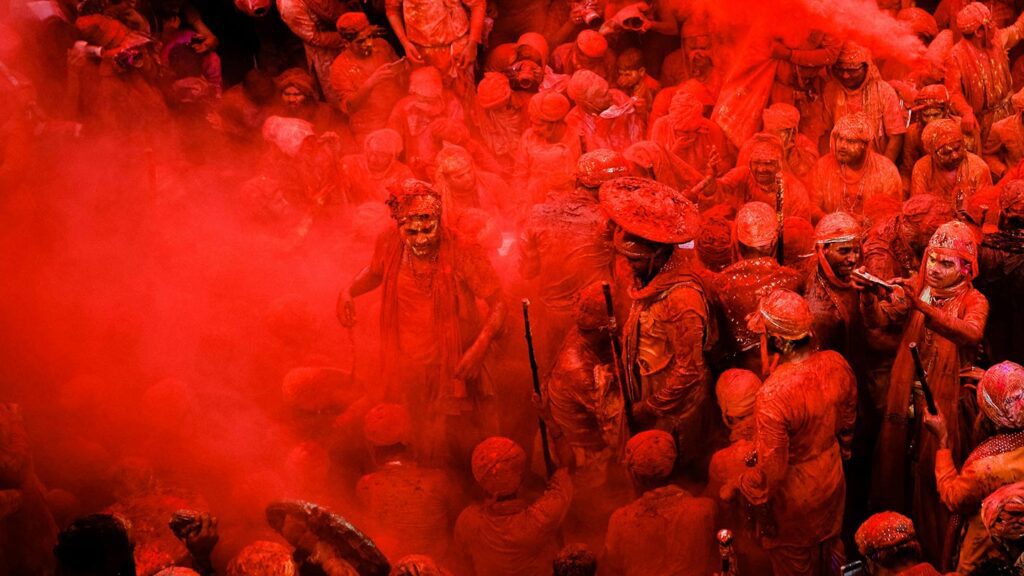

Why do they throw colors at Holi?
During Holi, the throwing of colored powder, called “gulal,” symbolizes several things. It reflects the vibrant colors of spring and celebrates new beginnings. Traditionally colors came from Indian flowers and herbs, but now they are usually synthetic.
The colors themselves hold meaning, and throwing colors is a playful way to break down social barriers, forget differences, and celebrate life’s joy together.
- Red – represents love, passion, and fertility.
- Yellow – symbolizes turmeric, a spice with medicinal properties associated with good health and prosperity.
- Blue – often linked to Krishna, the playful Hindu god with blue skin, reflecting his divine presence.
- Green – signifies new beginnings, fresh growth, and the vibrant energy of spring.
Other colors can be used during Holi, but these ones hold the most traditional meanings.


TAKE A TRIP: Captivating Kerala
What is the difference between Holi and Diwali?
Diwali is another major Hindu festival that marks an entirely different occasion. While Holi is a vibrant spring celebration, Diwali – also known as the Festival of Lights – is a more subdued autumn festival.
While the festival also celebrates the triumph of good over evil, this is represented as light superseding darkness. Diwali is focused on inner light, spiritual victory, and blessings. Homes are decorated with lamps (diyas), families gather, and sweets are exchanged.
RELATED BLOG: Extraordinary festivals in Asia every traveller must go to
How do people celebrate Holi around the world?
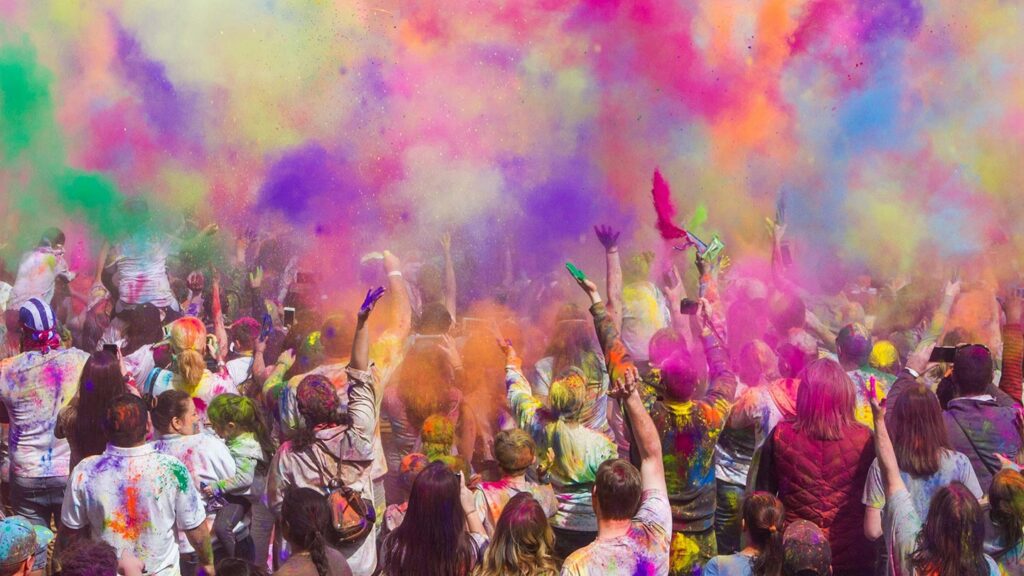

The spirit of Holi transcends borders! While the heart of the celebration lies in India, the Indian diaspora carries its magic around the world. From London to Sydney, you can find huge Holi gatherings erupting in a colorful chaos around the world.
A trip to India is obviously the best place to experience Holi, but if that’s off the card look for local temples, who often host Holi celebrations, or public city events that welcome everyone. The core traditions – throw of colors, eating sweets like gujiya, and lighting bonfires – can be found at most Holi events.
Some places have added a local flavor to tradition, like in Trinidad, Holi merges with Carnival, or in Suriname, it’s called Phagwah and features unique local music.
RELATED BLOG: What is Diwali and how is it celebrated?
RELATED BLOG: 7 Colourful Festivals Around the World


When is the next Holi?
The next Holi celebration in 2024 falls on March 24 and 25. In 2025 the dates will be March 14 and 15.
Are you planning to join local Holi celebrations or visit India in 2025? Let us know in the comments…